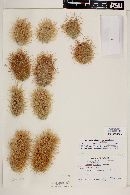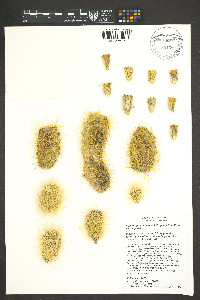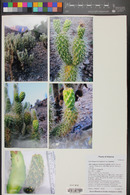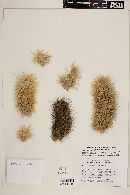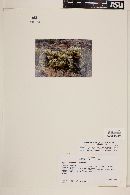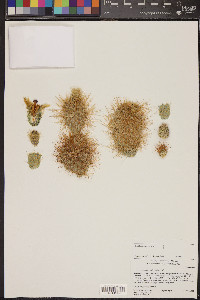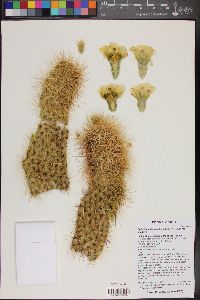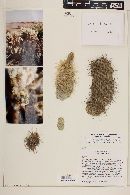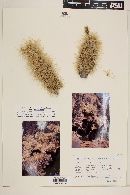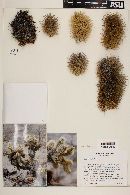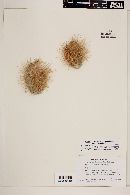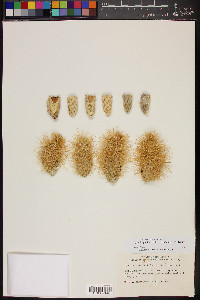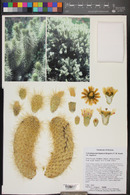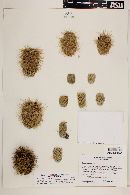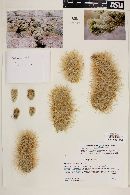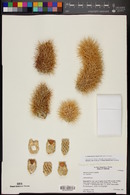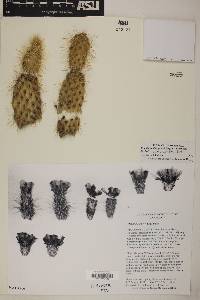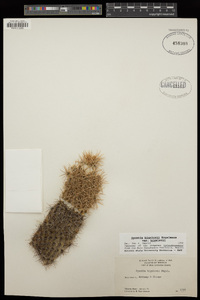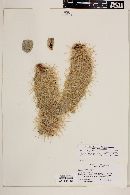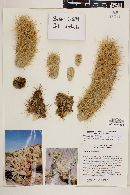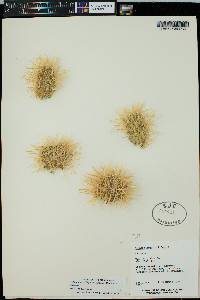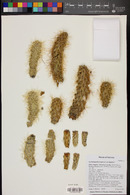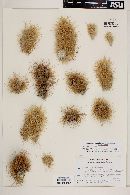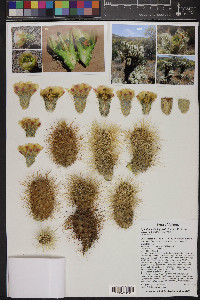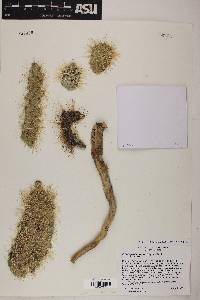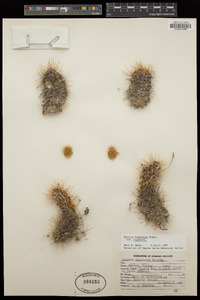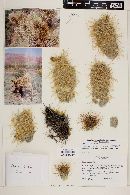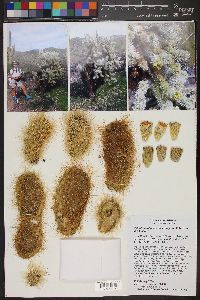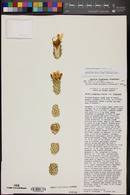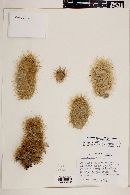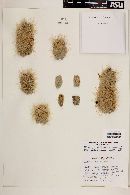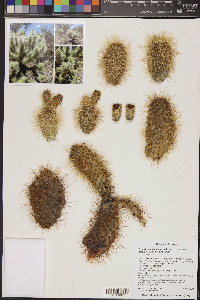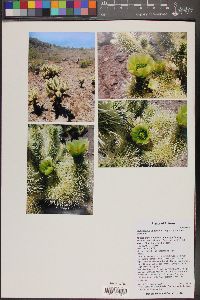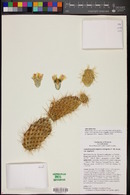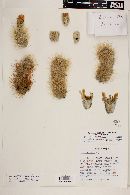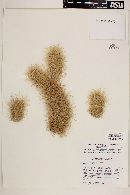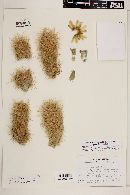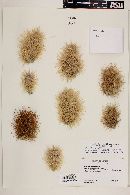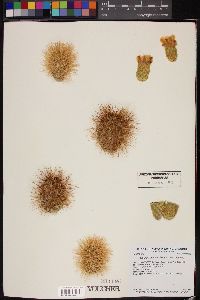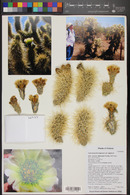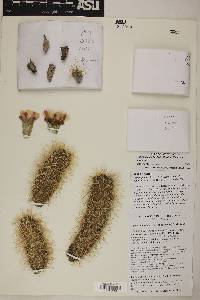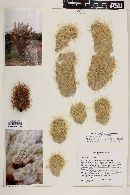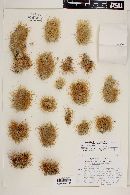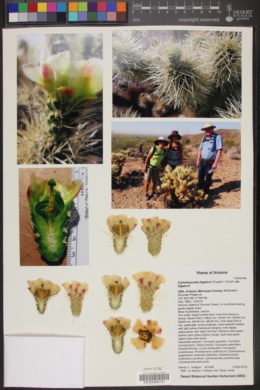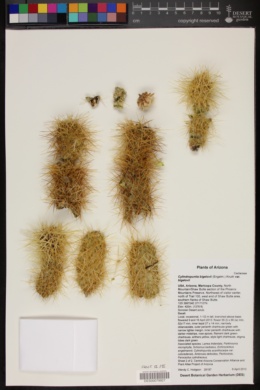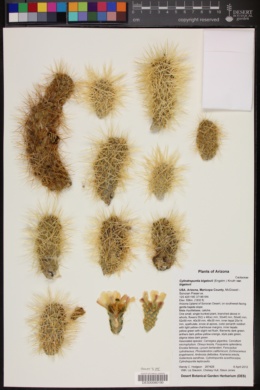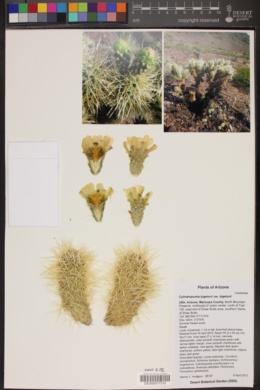
|
|
|
|
Family: Cactaceae
[Opuntia bigelovii var. bigelovii] |
Trees, densely branched, with older branches at base of crown dark brown, clinging to usually solitary trunk, 0.3-1.5(-3) m. Stem segments whorled or subwhorled, green to gray-green, 4-13(-18) × (2-)4-5.5 cm, distal ones usually very easily detached (propagules); tubercles salient, broadly oval, 0.4-0.8 cm; areoles elliptic-deltate, 5-6 × 3-4 mm; wool white-yellow to brownish, aging gray. Spines (8-)10-15 per areole, at most areoles, interlaced with spines of adjacent areoles, usually uniformly, diffusely spreading and nearly completely obscuring stem, pale yellow to yellow to tan, aging brown; abaxial spines spreading to deflexed, subterete to flattened, the longest (10-)15-25 mm; adaxial spines erect or spreading, terete, the longest (10-)20-28 mm; sheaths uniformly whitish or pale yellow, not obviously baggy. Glochids in broad adaxial crescent, sometimes extending along areole margins, yellow, 3-4 mm. Flowers: inner tepals pale green to whitish, sometimes tipped red, spatulate, (15-)20-25 mm, emarginate-apiculate, often erose; filaments green; anthers orange; style light green; stigma lobes light to dark green. Fruits usually sterile, not proliferating, yellow at maturity, cylindric to broadly obconic, (15-)22-40 × (8-)16-20(-28) mm, fleshy-leathery, strongly tuberculate, becoming spineless, losing bristlelike spines of young fruit; umbilicus 8-10 mm deep; areoles 36-64, evenly spaced. Seeds, when present, pale yellow, in gelatinous mass, angular to squarish in outline, 2.5-4 × 2.2-3.5 mm, warped, sides with 1-2 large depressions; girdle smooth or as very narrow marginal ridge. 2n = 22 or, usually, 33. Flowering spring-fall (Mar-Jun, Sep). Mojave and Sonoran deserts, sandy flats, gravelly to rocky washes, bajadas, hillsides; 300-900 m; Ariz., Calif., Nev.; Mexico (Baja California Sur, Sonora). Cylindropuntia bigelovii forms two hybrids. Cylindropuntia ×fosbergii (C. B. Wolf) Rebman, M. A. Baker & Pinkava (= C. bigelovii × C. echinocarpa), which L. D. Benson (1982) treated as Opuntia bigelovii var. hoffmannii Fosberg, occurs southwest of the Salton Sea, California, forms shrubby trees 1-2 m with yellow-green inner tepals and green filaments, and has a chromosome number of 2n = 33. Cylindropuntia ×campii (M. A. Baker & Pinkava) M. A. Baker & Pinkava (= C. bigelovii × C. acanthocarpa) forms more open trees than O. bigelovii, has yellow-green inner tepals and filaments, and has a chromosome number of 2n = 44.
PLANT: Shrubby trees, usually with solitary trunk. STEM: segments very spiny, obscuring the tubercles. SPINES: usually 7-11 per areole. 2n = 22, usually 33. NOTES: See also parent taxon. Sandy desert flats to gravelly to rocky washes, bajadas and hillsides; Gila, La Paz, Maricopa, Mohave, Pima, Pinal, Yavapai, Yuma cos.; 300-900 m (1000-2900 ft); Mar-Jun, Sep; CA, NV; Baja C., Baja C. Sur, Son. in Mex. Hybridizes with C. acanthocarpa var. major. REFERENCES: Pinkava, Donald J. 1999. Cactaceae. Ariz. - Nev. Acad. Sci. 32(1). |
This project was made possible in part by the Institute of Museum and Library Services [MG-70-19-0057-19].
Powered by Symbiota


